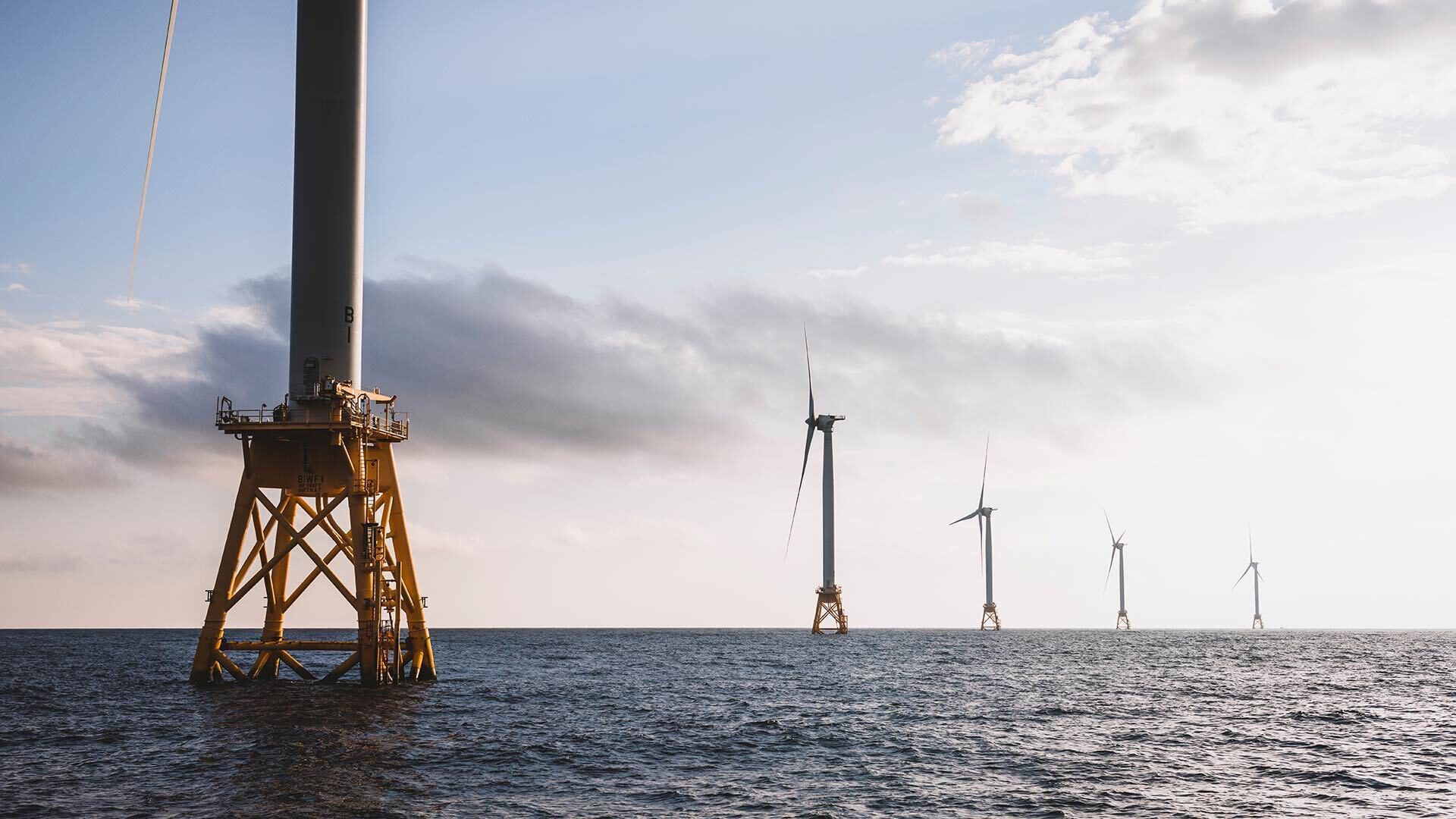- January 29, 2024
- By Emily C. Nunez
The state of Maryland’s accelerating commitment to reaping renewable energy from offshore wind farms could be a big win for Earth’s climate—but things might not go quite so swimmingly for the fish.
A new law passed last year calls for enough offshore wind energy generation by 2031 to power 3 million homes. However, there is concern that the construction of wind farms in Maryland and other state waters will involve pile-driving, which is typically used to build underwater foundations for turbines and can generate up to 222 underwater decibels of noise in the immediate area for short bursts of time.
“Imagine being at an airport with a Boeing 747 at full power and you put your head near the engine. That’s how loud it is,” said Arthur N. Popper, a professor emeritus in the University of Maryland’s Department of Biology.
Researchers still don’t know enough about the effect of such onslaughts of noise on marine life, said Popper, who has studied the effects of human-generated underwater sound on fishes and invertebrates for more than 30 years and has advised companies and governmental agencies around the world on best practices to minimize harm. In a recent interview, he discussed the opportunities and risks associated with offshore wind farms, and the challenges of studying a vast sea of sounds.
This interview has been edited for length and clarity.
How important is hearing to fishes?
One of my colleagues and I have argued—and it’s reasonably accepted now—that hearing evolved in fishes to give them a bigger worldview than they would get from any other sense. Vision has a limited range underwater and is useless in the dark, and chemical signals travel slowly in water and are subject to currents. To get a long-distance, 360-degree view of what’s going on around them, sound is the best form of communication for fishes.
How does underwater noise affect fishes and invertebrates?
Human-generated sounds can potentially interfere with the ability of fishes and invertebrates to hear sounds of biological importance to them, such as the sounds of potential mates or predators. There are data, for example, showing that male Atlantic cod and haddock congregate and make sounds, and the females hear the sounds and come to the males to spawn. If the females can’t hear the males because there’s so much noise in the environment, you’ve harmed a generation of animals. Anything we’re doing in the ocean—from pile driving to shipping to wind farms—has a potential impact on vast populations of animals and their reproductive capabilities.
What sparked your interest in the noise generated by offshore wind farms?
Wind farms are becoming a big thing on the East Coast of the United States, and I’m consulting with different groups that are involved in developing and regulating wind farms. The construction of wind farms is a big issue because it is a source of considerable noise during construction, but far less so during operations. In some places in Europe, they don’t drive piles into the substrate to support the wind farms. Instead, they let them float and use big weights and cables to keep them in place. But in the United States, at least on the East Coast, I haven’t heard of that happening.
Is the noise dangerous for fish?
There is concern that if fishes are very near piles being driven into the sediment, the sound may be loud enough to kill, or at least severely damage, them. However, there is no reason to think that fishes further away would be physically harmed, and waters are much quieter during operations of the wind farm. The main issue is that sound can spread large distances and affect fish behavior. Sounds may mask a fish’s ability to communicate or scare them away from a feeding site.
Is it possible to have the best of both worlds: to promote sustainable energy while also protecting marine life?
Wind farms are useful sources of power. They don’t cause pollution, they’re not taking up space on shore and they produce a good deal of energy. There are some real advantages, but we need to learn a lot more about their impact on marine life.
What needs to be done to learn more?
A couple of years ago, colleagues and I argued in a paper that the way in which human-made sound is evaluated and mitigated is backward. For most projects, people install devices to mitigate sound in the water, but they never stop to ask, ‘Do the fish care? Can they even hear the sounds?’ In effect, people doing pile driving put in a solution without asking if it is effective or useful. Considering that this may not protect animals—or that the animals may not need protection—we argued that we should learn more about how fishes deal with sounds and then design devices to specifically protect them. The point we’re getting at is that the right questions have not been asked.
Why is there so little research on how sounds affect fish, compared to that devoted to marine mammals?
Marine mammals are cute, interesting and smart, and people relate to them. People fall in love with Flipper and Free Willy, but tuna? That’s what comes out of a can. Marine mammals are important, but we should be much more concerned about fishes and invertebrates because we depend on them. According to the Food and Agriculture Organization of the United Nations, aquaculture and fisheries provide 17% of the animal protein consumed worldwide. As food supplies become narrower in the future, fishes and aquatic invertebrates are going to become even more important.
Studying fishes in the open water is also extraordinarily hard. Marine mammals surface every few minutes so you can put tracker devices on them, but you can’t do that with most fishes. Plus, there’s never enough funding to work on fishes and marine invertebrates. The challenge is: How do you get the funds to do very expensive and very difficult work?
Topics
Research